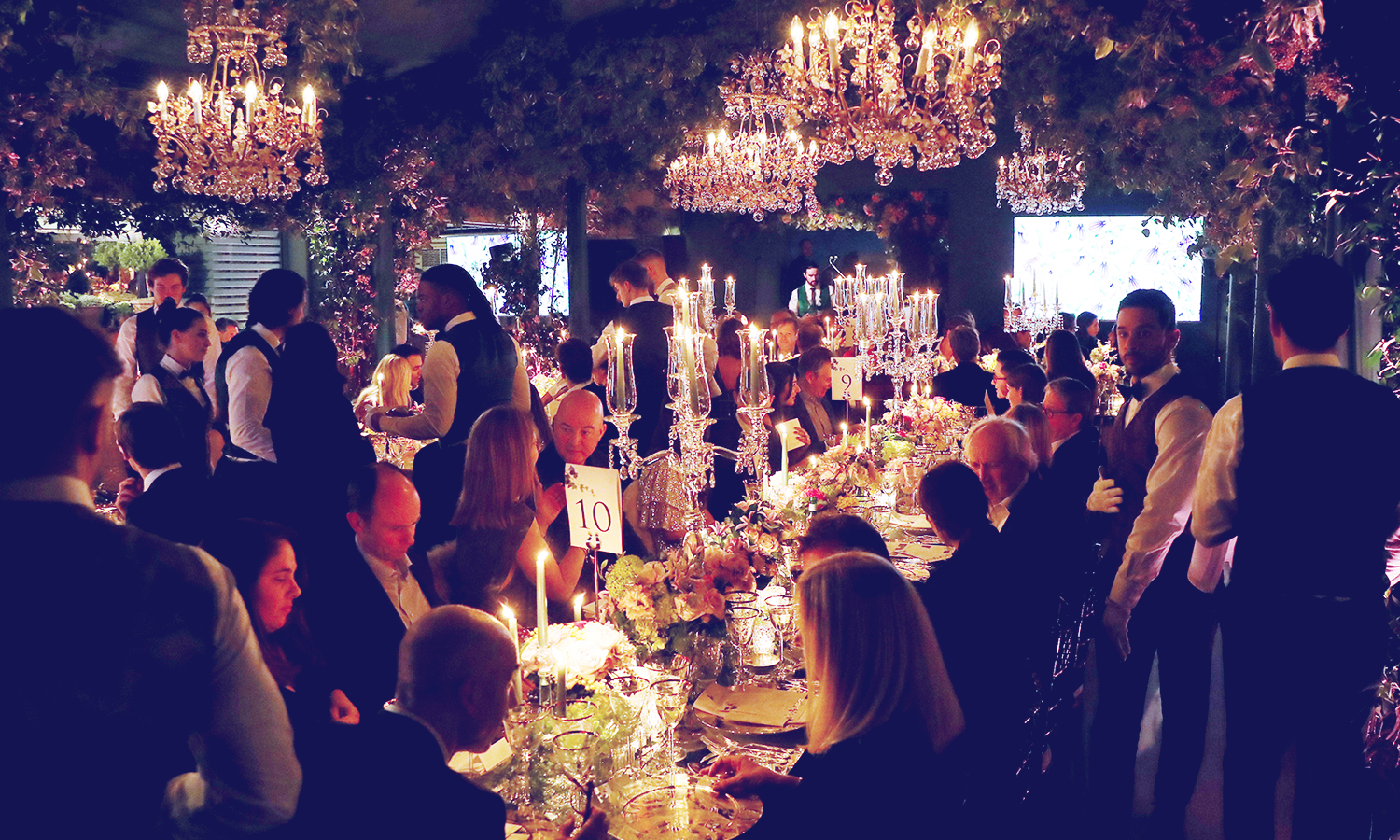Nonprofit fundraising events get a post-Covid makeover: Part 2 of our conversation with FSF’s Peter Arnold

It used to be that the decision to hold a fundraising event, and what kind, was determined by the numbers. Nonprofit pros evaluated the figures that keep their mission alive, like revenue potential, expenses, labor and time.
However, the past couple of years have shown us that there are now other factors to consider. Should the event be held outside under a tent? Inside the New York Public Library (more on that below)? Or… please just say no… on Zoom? How do you feed people in a world where buffets are considered a biohazard? How many people will even change out of their sweatpants to show up? What if the next Covid wave hits and the whole operation has to shut down at the last minute?
These are the kinds of questions that keep both nonprofit executives and experiential creators up at night.
Earlier this month, we highlighted the Fashion Scholarship Fund’s triumphant return to live events with executive director Peter Arnold. This year’s gala showed its donors what their contributions help to achieve, celebrating the 123 scholars in this year’s class, including 23 Virgil Abloh “Post-Modern” Scholarship Fund winners, during FSF LIVE.
Now, Peter is back for round two with some awesome, on-the-ground insights on how the nonprofit events world has changed since 2019 (including why it needed a refresh), pivoting to virtual and what the future holds for the art of the fundraising gala.
Samantha Stallard: Describe your experience in the world of nonprofit events and fundraisers pre-pandemic. What were the highs and lows of the industry?
Peter Arnold: I’ve had a breadth of nonprofit event experiences pre-pandemic. They started my first year as the executive director of the Council of Fashion Designers of America. The CFDA Awards — I’m not sure I knew what I had gotten myself into! For a window into that world, I was told by more than one leading American designer to make sure that their brand’s table was in a better position than their rival’s.
It was tough to secure a host, too. The CFDA Awards audience is notoriously not an easy one to please, let alone get to laugh. Nevertheless, we had some memorable events — one in particular included a two-block-long table, running the length of the New York Public Library’s grand hallway, from 40th to 42nd Street, for 800 guests. Seating? That was a challenge.
SS: What were the highs and lows for the industry then?
PA: The highs are always the emotional moments. Generally not scripted. I’m grateful for that moment when the folks in the room appreciate why they are there — hearing from somebody compelling onstage and pausing and reflecting, if not shedding a tear. And nothing beats Sean Combs dancing for joy when he won his first Menswear of the Year Award, or Oleg Cassini telling a very bawdy joke involving his mustache and a well-known socialite.
These sorts of moments come more easily now in my role as executive director of the Fashion Scholarship Fund, especially when our students share about their journeys. Guests then appreciate the “value” of the event — why they’re there, why they’re paying to be there and what/whom their money supports.
SS: When Covid hit, how did you pivot to a virtual-first engagement strategy? What were the results? The pain points?
PA: We pivoted due to COVID two years ago and put together a very well-produced, fast-paced, short virtual event of edited pre-taped segments. Tamron Hall was the “live” host. It was a bit of a relief to have a prepackaged event, but the value proposition was harder for our supporters to appreciate virtually. And there were no special unscripted moments.
Nevertheless, we had a very engaged and grateful audience — perhaps their gratitude was for the brevity of an event that one could “attend” from home! But, virtual or hybrid will not be our new normal. One of my pet peeves is when honorees are unable to attend and have to convey their thanks to the room via video message.
SS: Now that events are cautiously returning, what positive changes are you seeing at nonprofit fundraisers, both behind the scenes and guest-facing?
PA: I continue to go to lots of events, especially these past few spring weeks. Although it is great to be in a room together, sit-down dinner galas are starting to feel a bit old-school if not timeworn to me. And, generally, the mission targets — the beneficiaries — aren’t even present! It’s really all about the program before, during, or after dinner. I’m proud of the way we did it with Liberty & Co. two weeks ago — an extended cocktail hour, with the beneficiaries in the room. And not just a handful of them, all of them, meaningfully engaging with the guests. That works for me and feels like the future!
Join us in XP Land. A community for experiential creatives and experience-makers, brand leaders and IP-owners, space stewards and venue visionaries — all of those in the business of epic gatherings and live, immersive storytelling.